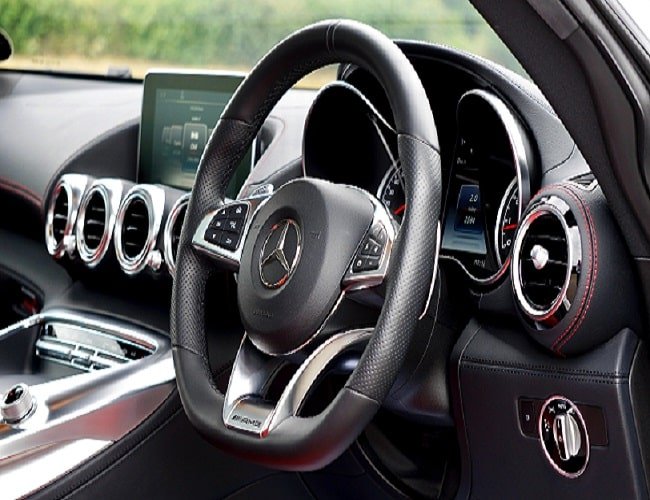Airbag is inflatable cushions built into a vehicle that protect occupants from hitting the vehicle interior or objects outside the vehicle during a collision. Sensors start measuring impact force as soon as a crash occurs. If the collision is serious enough, the sensors send a signal to the inflators to quickly inflate the bags with gas.
It is made up of an impact sensor, an inflating module, a flexible fabric bag, and an airbag cushion. The airbag’s function is to softly cushion and restrain a car’s occupant during a collision. The airbag provides an energy-absorbing surface between the vehicle’s occupants and a steering wheel, instrument panel, body piller , headliner, and windshield.
The airbag electronic controller unit (ecu) receives critical information from the vehicle’s crash sensors during a collision, including collision type, angle, and impact severity. The airbag ecu’s crash algorithm uses this data to assess whether the accident event fits the requirements for deployment and activates various firing circuits to deploy one or more airbag modules within the car.
Types of Airbags

In modern vehicles there are almost six to eight airbags for the passengers safety. But mainly two airbags are categorised. The frontal airbag and the side airbag.
Front AirBag

Front airbags are designed to inflate in moderate to severe frontal crashes to prevent a person’s head and chest from contacting hard structures in the vehicle. Although they are made to offer protection for all passengers, they offer the best protection when passengers are buckled up and seated appropriately.
In order to determine whether to deploy the airbag in a specific crash, more recent airbags incorporate a safety belt sensor and utilise an algorithm to determine whether people are wearing safety belts.
If there is enough forward motion during the incident, front airbags may deploy to help protect people inside hits.The steering wheel houses the driver airbag. The passenger airbag is located in the dashboard.
Side Airbag

Side airbags designed to protect the head, also known as curtain airbags, come out of the roof above the windows. Some contemporary cars also include side airbags in the back seats, albeit they are more frequent in the front seats of a car.
Side airbags shield the head and upper body. They increase the effectiveness of the structural safeguards included into the bodywork to safeguard the occupants from side impacts.
The side airbags for the driver and front passenger are typically found in the backrests of the front seats, ensuring that they are constantly in the ideal position to protect the upper body. The side airbags for the backseat passengers are frequently hidden under the door panels.
There is substantially less time than in the front for detecting, activating, and inflating airbags in the case of a side crash due to the car’s restricted number of deformation zones and the close proximity of the occupants to the car door.
Evolution Of Air Bag

In 1951, the first airbag concept was developed, but the motor industry took its time implementing the new technology. In the United states, airbags didn’t become standard until 1985, and it took several more years for the technology to become widely used.
All cars were obliged to have a driver’s side air bag or an automated seat belt under passive-restraint legislation that went into effect in 1989. Further legislation in 1997 and 1998 expanded the mandate to include light trucks and twin front air bags.
The 1980s and 1990s saw the widespread availability of airbags. Airbags were once available as options, but they’re gradually being added to the basic safety features that come with many cars.
They’re now thought of as a fantastic alternative to seatbelts, and automakers are developing new applications for them while also enhancing every part of their functionality.
Thus, installing and replacing airbags is a fundamental vocational skill. Every time an airbag inflates, it must be replaced because they are a single-use technology.
Importance Of Airbag

The importance of an airbag is immense in saving someone’s life from any absurd situation. The most common configuration is in front of the driver and front passenger seat. Backseat airbags are less common, among many reasons because they present a child safety hazard.
With the smaller size of child passengers, airbags cannot deploy at a safe height. This is, incidentally, one of the reasons why safety guidelines demand that children below a certain size and weight travel in the back seat. That is also why air bag technology is taught in auto mechanic courses.
Conclusion
In conclusion it can be said that an airbag is a life saviour. But no safety is enough. So it is our bounden duty to look after us and keep ourselves safe.
Let us know by your comment if you benefited with our information or not. Stay tuned for such more articles.





